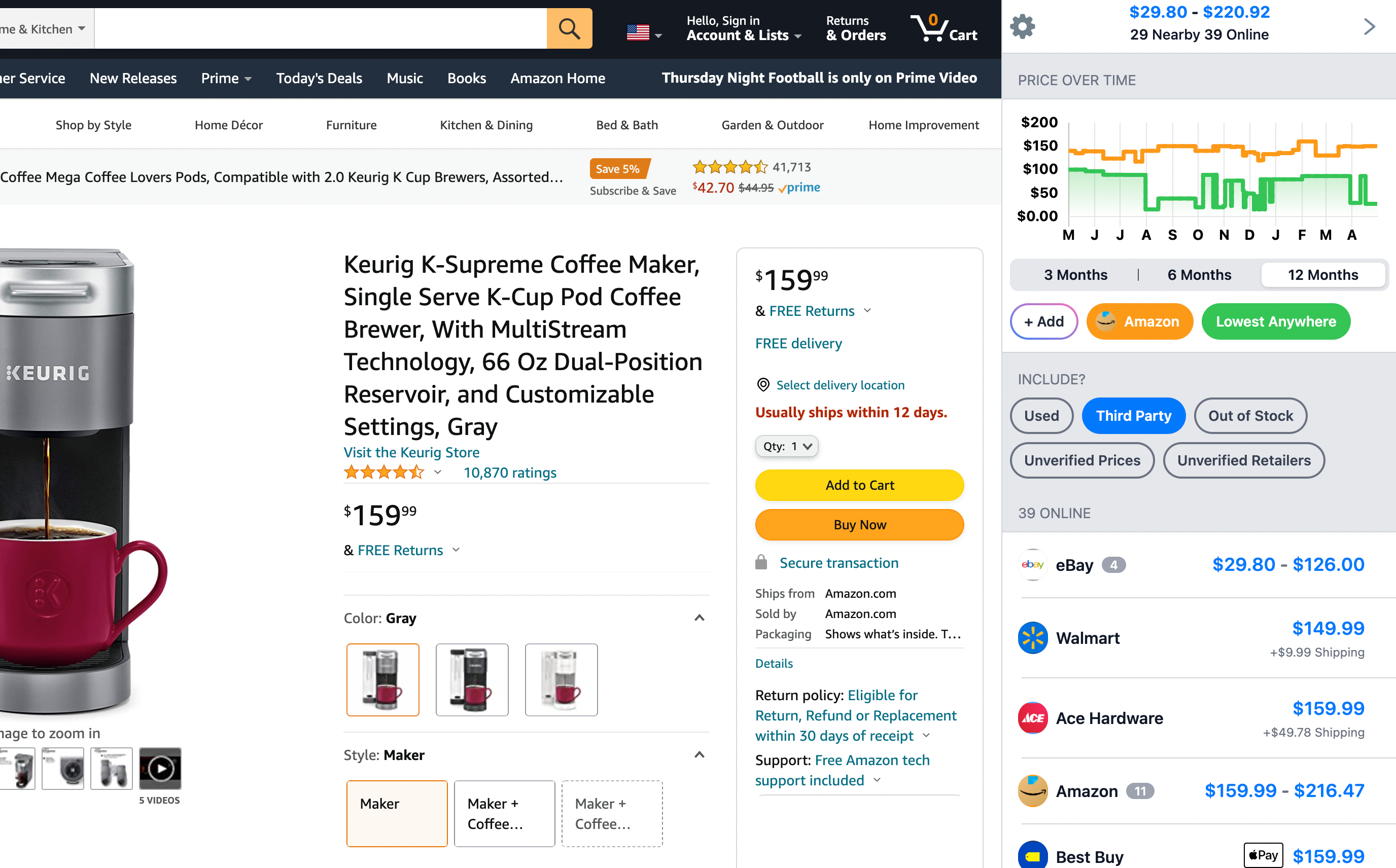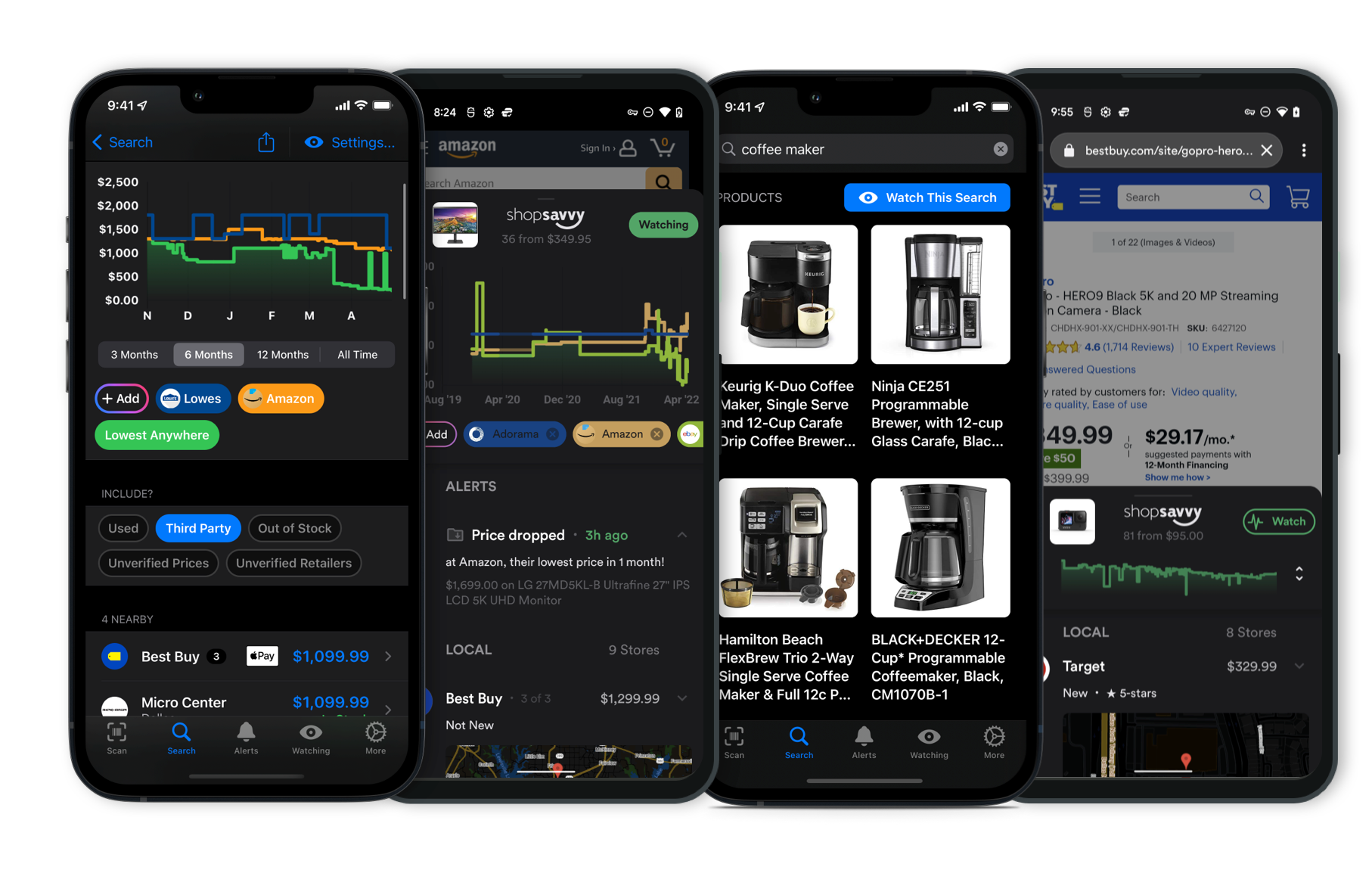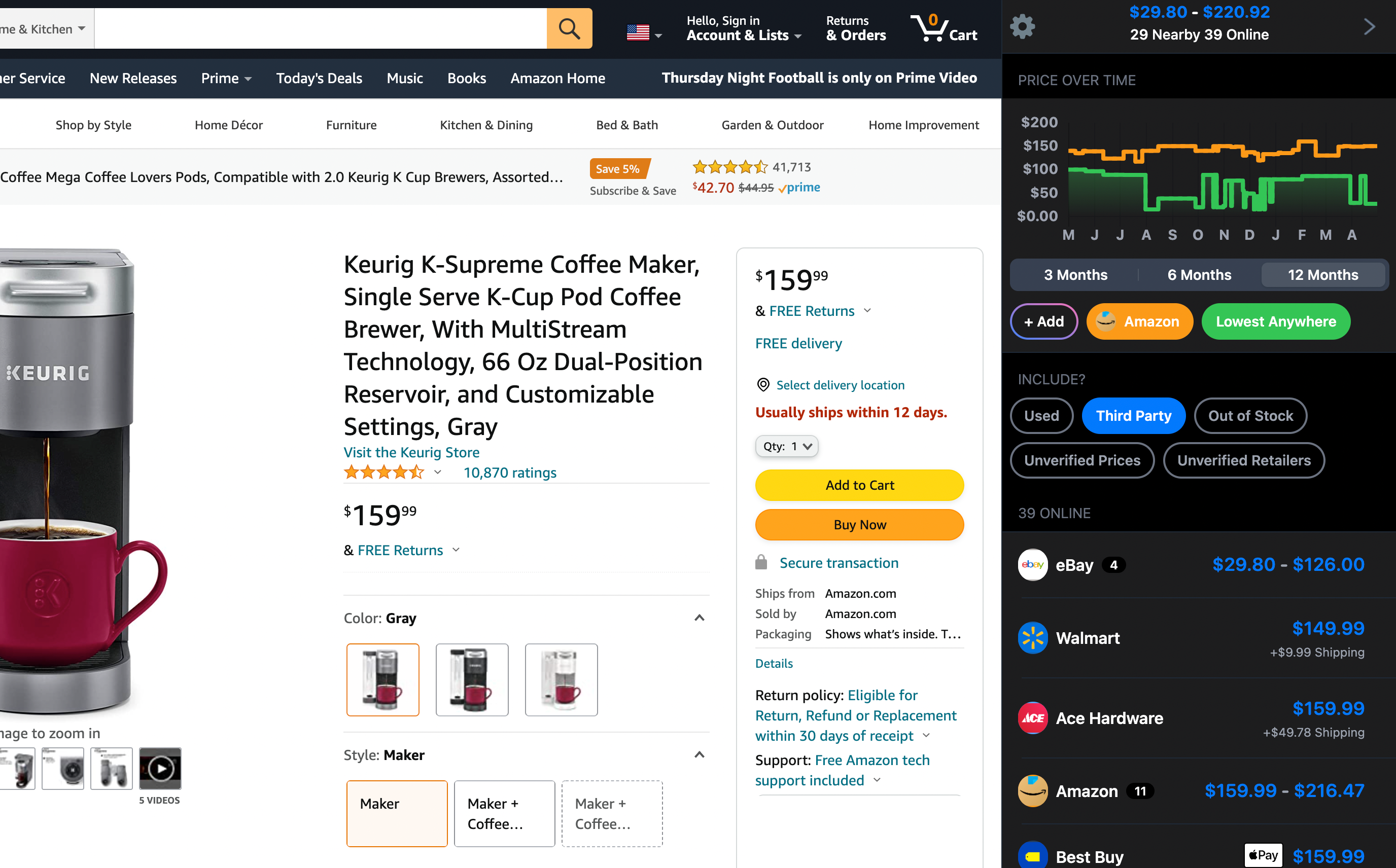Latest Answers about Audio Products
Deciding between the Sonos Sub Mini and the larger Sonos Sub really comes down to your space, setup, and performance needs. The Sub Mini is a smaller, wireless subwoofer that's perfect if you're short on space but want to enhance your audio. On the other hand, the larger Sonos Sub is for those chasing top-notch audio with room to spare.
Setup and Installation:
Setting up the Sub Mini might be a bit tricky for some folks. It seems like there can be hiccups with the app and pairing up devices.
We've also found that specific routers, like Spectrum, can cause some connection headaches. In such cases, using an Ethernet connection or trying a different router might do the trick.
Another thing to watch out for is the PIN during setup—the small, low-contrast text can be tough to read. If you run into bumps, it might help to have a tech-savvy friend on call since some have found Sonos customer support a bit slow.
Audio Performance:
Once you've got it set up, the Sub Mini impresses with its sound. Our research shows it can pump out powerful, dynamic bass that really amps up music and movies with that classic Sonos audio experience.
Its smaller size means it's great for apartments or condos, fitting nicely without compromising on sound.
Comparing it to the bigger Sonos Sub, the Mini's compact nature makes it a wise choice if you're tight on space. But if you want the fullest bass possible and have the room for it, the larger Sub might be what you're looking for.
Conclusion:
In short, the Sub Mini is a solid option if you're after a compact yet powerful boost to your Sonos setup. Just be ready for a potentially involved setup process.
With a bit of patience and maybe some extra help, you'll soon be enjoying the impressive sound it has to offer.
The Sonos Sub Mini is a great choice if you're looking to amp up the bass in your Sonos setup. It's got a hefty 250 watts of power, so it's definitely going to make your audio experience richer.
But, like with any tech, there are some connectivity things to keep in mind to make sure it's working perfectly with your other Sonos devices. Most folks connect the Sub Mini wirelessly using Wi-Fi, which makes it blend in seamlessly with other Sonos speakers like the Arc, Beam, and Ray.
Our research shows that Wi-Fi is pretty much everyone's go-to since it makes managing your system through the Sonos app super easy. It's all about convenience and getting that performance edge.
If your Wi-Fi isn't cutting it, there's always the option to go with an Ethernet cable. That's great for a more stable connection. But, just a heads up—Bluetooth isn't an option here. Sonos is sticking with its strategy of keeping everything within its networked audio system, so if you want to hook up something that's Bluetooth-only, you're out of luck.
From what we've seen, the setup process is pretty straightforward, thanks to the Sonos app. It not only makes managing things easier, but it also helps you tweak the audio to fit your room perfectly.
So, if you're already into Sonos gear or thinking of joining the club, using Wi-Fi for the Sub Mini will make sure you get the best sound. Just remember, it's meant to be part of a Sonos family, so make sure your setup is all set, whether you're going wired or chilling with Wi-Fi.
The Sony LinkBuds S have a pretty decent battery life for day-to-day use. Based on the manufacturer's description, you get up to 6 hours of listening time with noise canceling turned on, and then the case gives you another 14 hours. So, together that's about 20 hours.
Plus, if you're in a rush, the fast charge feature is super helpful. You can get an hour of playtime from just a 5-minute charge—perfect for those mornings when you forget to charge them overnight.
While in terms of comfort and sound, they're generally quite enjoyable to use, our research has come across a few potential areas of concern. Some folks mentioned experiencing issues with sync and balance, especially with the noise-canceling feature. For example, sound might occasionally go out of sync between the left and right earbuds, leading to a slight echo.
Users also noted that the sound could be a bit tinny or flat without adjusting the EQ through the Sony Headphones app. This app does let you tweak the sound to your liking, but it might feel a bit complicated if you're not into fiddling with settings.
All in all, while the LinkBuds S are comfortable and capable, they might need a bit of tinkering to get just right. If you're using the automatic noise-canceling or ambient sound features regularly, there might be the odd glitch.
But overall, they offer solid battery life and performance for most uses.
So, the JBL Xtreme 4 has some pretty impressive battery life, according to what we've found. The manufacturer describes it as having up to 24 hours of playtime on a single charge, which is pretty sweet for road trips or outdoor hangouts when you need your tunes to keep going.
There's also a cool feature where the USB-C charging option lets the speaker act as a power bank. Perfect for when your phone’s about to die in the middle of your camping playlist, right?
Just a heads up, though, from what we've gathered, there have been a few complaints about the charging process. Some folks noticed issues with the chargers that come with the speaker. If that happens, switching to a different USB-C cable usually fixes it, though charging can be a bit slower.
It might be smart to test the charging straight away and maybe have a reliable third-party cable ready, just in case.
Even with these hiccups, the charging problems seem to be pretty rare. Most people are really happy with the JBL Xtreme 4's battery life, especially with the long playtime and power bank feature.
Just remember, actual battery life can change depending on the volume and other features you're using.
All in all, if you need a speaker with long-lasting battery life, the JBL Xtreme 4 seems to do the job. Just keep an eye on the charger and consider having a backup cable handy.
Thinking about giving your Sonos sound system a boost? Yep, you can definitely add a second Sonos Sub to your setup. This can really dial up the bass and depth of your sound, especially if you're using something like the Sonos Arc or other Sonos speakers. It's great for larger rooms where you want more intense bass.
The Sonos Sub is designed to pair seamlessly with other Sonos gear. According to the manufacturer's description, it delivers deep bass without that pesky vibrations since it directs the sound through its center. Plus, it connects over Wi-Fi, which tends to make setting it up with your existing system pretty straightforward—at least that's what a lot of people have found based on our research.
Our data suggests that most folks are really happy with what a single Sub does for their setup, and the effect is even more pronounced with two. Just make sure you've got a Sonos device that supports two Subs, like the Arc. Once you've checked that box, adding them isn't too tricky and you'll likely notice improved depth and clarity in your sound.
A heads-up, though—some people have run into connectivity issues when adding extra Subs. These might involve reconnecting more often than you'd like or facing some setup challenges. There's a tendency for software updates to cause these hiccups sometimes.
Keeping your Sonos app updated and checking for troubleshooting tips seems to help iron these out.
Overall, if you're looking to make your Sonos system sound a lot richer and more robust, a second Sub is generally a solid move. Just be mindful about keeping your software current, and you should enjoy some awesome, room-filling bass.
What is the sound quality like when using the BESIGN BK01 for music streaming?
If you're considering the BESIGN BK01 for music streaming in your car, the sound quality is generally pretty good according to our research. While feedback is mixed in some areas, most people seem to find it a nice option for cars that don't already have Bluetooth.
The manufacturer highlights that it streams music through your car's stereo via Bluetooth 5.0. This tech is supposed to improve efficiency and work with lots of devices. As for how the music sounds, most folks seem to appreciate the rich and clear audio. Plus, it has a built-in ground loop noise isolator to help cut down on any annoying background noise, which is a nice touch.
However, there are some hiccups on the hands-free calling side, especially with iPhones. Some users mention issues like lower call volume or a random loud beep when you play or pause. Simple fixes like toggling Bluetooth or reconnecting the device sometimes help, but these might be tied to firmware that can't be updated.
In terms of just streaming music, though, people are generally happy with it. They like how quickly it pairs and how smooth the audio is. It can even connect to two devices at once, which is handy if you like switching audio sources.
So, if your main focus is music streaming, the BK01 might be a reliable and affordable upgrade for your car. Just keep in mind those potential calling quirks if that's something you'll use a lot.
Setting up and using the Canon SELPHY CP1500 turns out to be pretty simple. It doesn't use Bluetooth, but it does have great Wi-Fi connectivity. According to the manufacturer's description, you can print wirelessly from your smartphone or tablet using Apple AirPrint and Mopria for Android, which is pretty convenient.
From what we've gathered, most people find getting the Wi-Fi going is a breeze, letting you ditch the cables and easily print from your devices. If you still prefer connecting directly, there's also an option to use USB, which can be useful for devices that don't support wireless.
Another handy feature is its option for mobile use. While Wi-Fi is great at home or any place with a network, you can also add an optional battery pack for portability. Just keep in mind, you'll have to buy this battery pack separately, which can up the total cost a bit, but it's perfect if you need to print on the go.
As for ease of use, our data shows folks like how straightforward the setup and use are. Transferring images only takes a few steps thanks to the simple instructions and design. This makes it a favorite for those who want to easily turn their digital photos into physical ones.
Overall, the Canon SELPHY CP1500 is a solid choice with its strong Wi-Fi connectivity and easy setup. Even though it lacks Bluetooth, most find that Wi-Fi and USB connections cover their needs just fine.
If you're after a reliable, high-quality photo printer that fits well with a wireless lifestyle, it’s worth considering.
Wondering about the audio quality on the ASUS Vivobook 16?
According to our research, it has built-in speakers that do a decent job for everyday stuff like videos, music, and video calls. The manufacturer claims it has ASUS SonicMaster technology to make the sound clearer and more immersive.
But there's a catch—some folks have mentioned that the sound gets a bit tinny at higher volumes.
So, if you need top-notch audio, you might want to think about using external speakers or headphones.
The Ultimate Ears WONDERBOOM 2 has a pretty solid battery life. The manufacturer says it can last up to 13 hours on a full charge. So, it should be good for a full day of use, whether you're out and about or just hanging at home.
But heads up, it does have an automatic shutoff feature. If it’s inactive for 15 minutes, it’ll power down to save battery. Some folks find this a bit annoying because it can't be turned off, and the startup sounds when you turn it back on can be loud.
Unfortunately, there's no companion app for the WONDERBOOM 2 where you could tweak these settings or silence the noises. According to our research, some people like the simplicity of that, but others wish for a bit more control.
Overall, even with the automatic shutoff thing, the 13-hour battery life is pretty dependable for most needs.
Yep, you can pair two Anker Soundcore 2 speakers. According to the manufacturer's description, they support True Wireless Stereo (TWS) pairing, letting you hook up two speakers for a bigger, stereo sound experience.
Here's how you can set them up:
-
Turn on both Anker Soundcore 2 speakers. Make sure they aren't connected to any other devices.
-
Enter Bluetooth pairing mode on both speakers. Just press and hold the Bluetooth button until the light starts flashing.
-
Initiate TWS pairing. On one speaker, press the Bluetooth button twice. It'll look for the other speaker and pair up. Once they're linked, the primary speaker's light will stay steady, and the secondary one will flash slowly.
-
Connect your device. Now, use your phone or whatever device you have and connect to the primary speaker. You should only see one speaker in your Bluetooth list.
After you're connected, you'll get stereo sound through both speakers. Our research indicated that people really like the improved sound and extra volume when using two together.
Just a heads-up: TWS only works if both speakers are the same model. So, if you're trying to pair a Soundcore 2 with a different model, it won't work.
The pairing steps are pretty straightforward, but if you hit a snag, the user manual or Anker's customer support can help you out.
So if you're looking to level up your sound for parties or just home listening, pairing two Soundcore 2 speakers is a solid choice.
 Download ShopSavvy App
Download ShopSavvy AppCompare prices for anything in real-time, set price alerts, watch for deals by keyword, and much more
 Install ShopSavvy Browser Extension
Install ShopSavvy Browser ExtensionCompare and track prices automatically while you shop online at thousands of websites.
Footer 1
Published
Subscribe for Updates
Get the latest news, and updates on ShopSavvy. You'll be glad you did!




